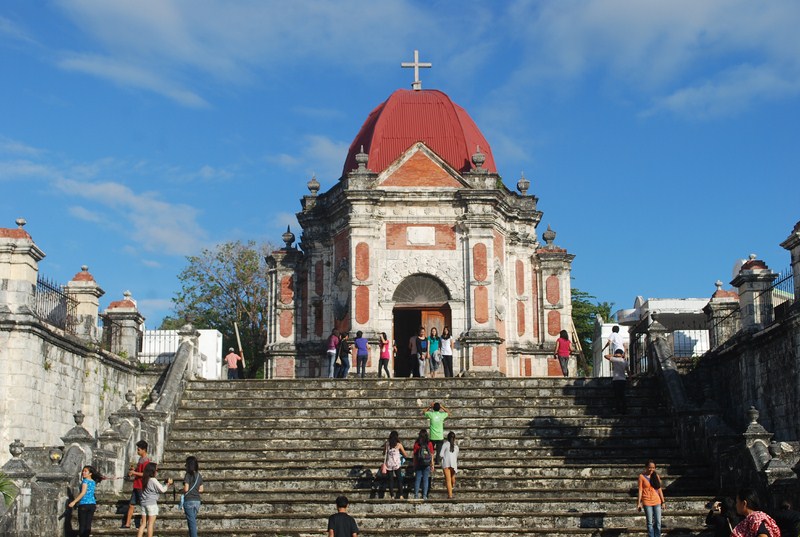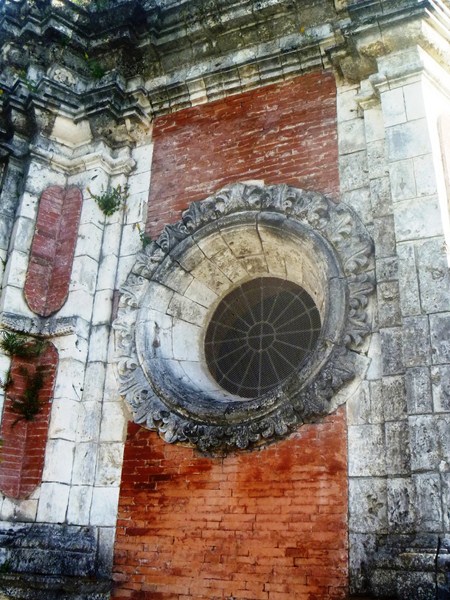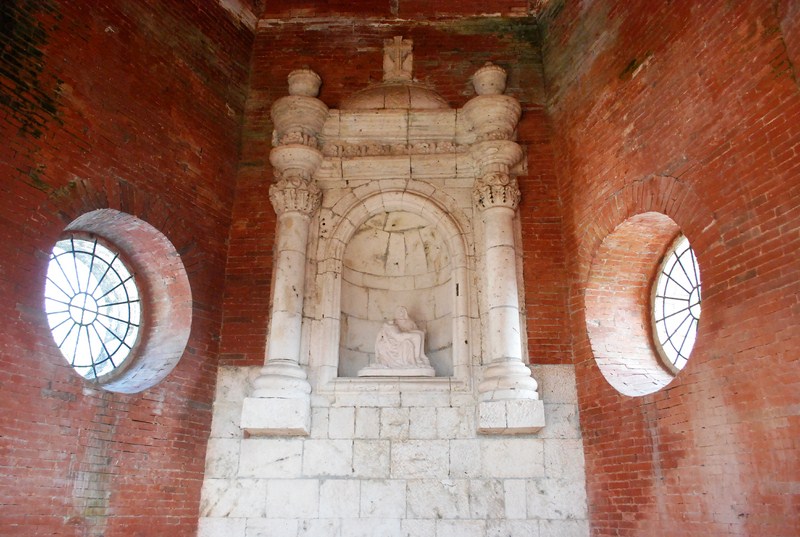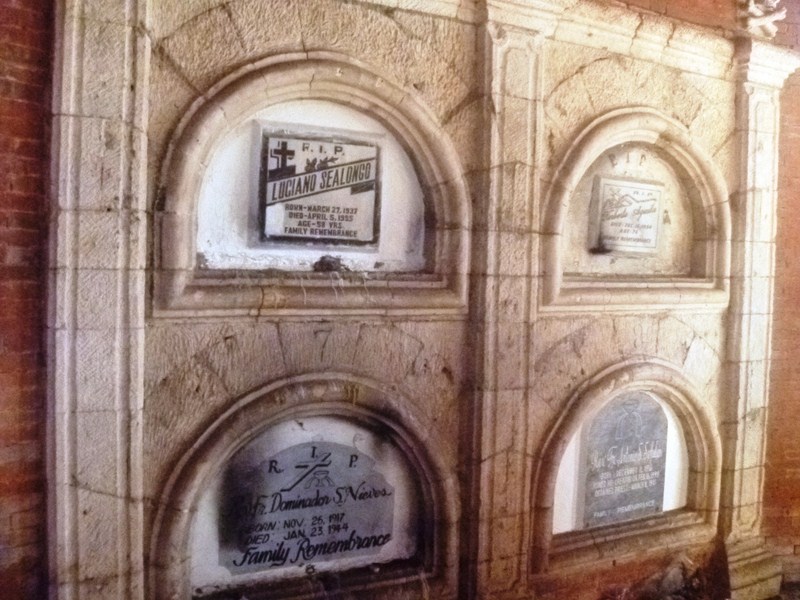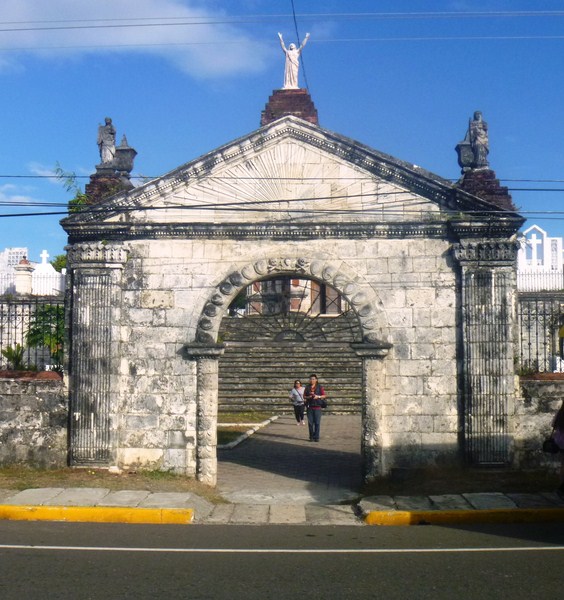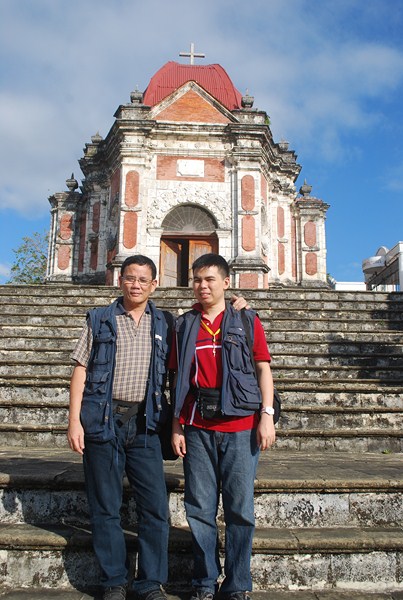From Miag-ao, we were next driven 12.5 kms. to the adjoining town of San Joaquin. Along the National Highway, we made another short stopover at the town’s Spanish-era cemetery (Campo Santo, translated as “holy field) where we visited its iconic mortuary chapel (capilla), the grandest and best preserved in the whole of Iloilo.
Nestled on elevated ground a kilometer from the poblacion, it was built in 1892 with coral rock and baked brick by Augustinian Fr. Mariano Vamba, the last Spanish parish priest of the town.
It has a vaulted hexagonal chapel decorated with Classical motifs; with tufa and plaster walls; a red, pointed dome and lateral rose windows. To reach this chapel and the cemetery compound, we had to climb a 20-step staircase flanked by twin-tiered stone balustrades.
Inside, facing the chapel entrance, is a statue niche with a small yet beautifully made sculpture replica of Michaelangelo’s renowned Pieta. Below it is the burial niche of Pedro Sarag y Saragena (September 8, 1855-October 15, 1923). Flanking both are 2 sets of 4 burial niches topped by a cross and flanked a skull and cross bones design.
Its Baroque-style gate, with its rich stone bas relief of carved stylized flowers and leaves, has a life-size statue of Jesus Christ, with his outstretched arms, on top of its triangular pediment. It is flanked, on each side, with two columns with angelic figures on top. The semicircular arch entrance, adorned by egg-shaped moldings, is topped by the sculpted head of a cherub between two skull and cross bones designs representing death.
How To Get There: San Joaquin is located 53.5 kms. from Iloilo City and 12.2 kms. from Miag-ao.

